 Beach Read by Emily Henry
Beach Read by Emily Henry Format: ebook
Source: purchased from Amazon
Formats available: hardcover, paperback, large print, ebook, audiobook
Genres: Chick Lit, contemporary romance, relationship fiction, women's fiction
Pages: 358
Published by Berkley on May 19, 2020
Purchasing Info: Author's Website, Publisher's Website, Amazon, Barnes & Noble, Kobo, Bookshop.org, Better World Books
Goodreads
A romance writer who no longer believes in love and a literary writer stuck in a rut engage in a summer-long challenge that may just upend everything they believe about happily ever afters.
Augustus Everett is an acclaimed author of literary fiction. January Andrews writes bestselling romance. When she pens a happily ever after, he kills off his entire cast.
They’re polar opposites.
In fact, the only thing they have in common is that for the next three months, they're living in neighboring beach houses, broke, and bogged down with writer's block.
Until, one hazy evening, one thing leads to another and they strike a deal designed to force them out of their creative ruts: Augustus will spend the summer writing something happy, and January will pen the next Great American Novel. She’ll take him on field trips worthy of any rom-com montage, and he’ll take her to interview surviving members of a backwoods death cult (obviously). Everyone will finish a book and no one will fall in love. Really.
My Review:
 Beach Read has been in the virtually towering TBR pile ever since I read – and fell in love with – Book Lovers early this year. I’ve been “playing along” with the Kindle Achievements every quarter, so when the list of possible titles to fulfill that last badge included Beach Read, it seemed like the universe was telling me that now was the time. So here we are.
Beach Read has been in the virtually towering TBR pile ever since I read – and fell in love with – Book Lovers early this year. I’ve been “playing along” with the Kindle Achievements every quarter, so when the list of possible titles to fulfill that last badge included Beach Read, it seemed like the universe was telling me that now was the time. So here we are.
Both January Andrews and Augustus Everett are best selling authors – but most definitely NOT in the same genre. January writes women’s fiction (not all that different from the author herself), while Augustus Everett is famous for his dark and gritty literary fiction.
Their characters and worlds do not even begin to intersect – but they do. They are both graduates of the same University of Michigan Creative Writing Program. In fact, they attended together and graduated at the same time, spending four years competing for every single award and critiquing pretty much every single one of each other’s works.
Saying they are familiar with each other is hardly a stretch – even if they have nothing in common. Or believe they have nothing in common. At least not until they find themselves next door neighbors in a northern Michigan beach community, wanting nothing to do with each other.
But needing each other all the same.
They’ve each fallen into some really deep ruts, and they are separately having a damn hard time crawling out of those ruts. January has stopped believing in happy ever afters, after the one she believed her parents had found turned out to be based on a lie. A year after her dad’s death, she has a book due, an empty bank account, and a severe case of writer’s block.
Leading her to her dad’s old home town and the house he shared with his childhood sweetheart at a point considerably after either of their childhoods.
Gus has never believed in happy ever afters. Or even happy for nows. He’s always looked on the dark side and is in the throes of his third book, this time about death cults and their few survivors. But he’s going through his own case of writer’s block, for reasons that he isn’t willing to share with January. Because sharing isn’t something that Gus does easily. Or at all.
Still, they’re both writers and they’re both stuck and they have a whole lot of common ground to build on – even if that ground is more than a bit shaky on both sides. So they challenge each other as a way of breaking their writer’s block.
And it turns into the making of a happy ending for everyone – including sorta/kinda – the protagonists of not one but two surprising new books.
Escape Rating A-: I enjoyed Beach Read, but not quite as much as Book Lovers, because it’s a bit too much like Book Lovers. Which isn’t fair to Beach Read, as it was published first even though I read it second. Still, if you like one you’ll like the other – although it probably isn’t a good idea to read them too close together.
Like Nora and Charlie in Book Lovers, January and Gus are not just both in the book business, but in the same end of the book business as each other. (Nora and Charlie were both editors, January and Gus are both authors). Which means that both books, in addition to being just the kind of stories that January writes, are steeped in the book business – merely different aspects of that business.
And both stories begin when the protagonists meet when both parties are in the midst of a “terrible, horrible, no good, very bad day.” What makes both stories fun to read is the way that they get themselves and each other past the horribleness.
We’re in January’s head in this story, so we know what she’s been through, what she’s thinking, and what she’s feeling. Because she and Gus knew each other fairly well – and very nearly better than that – once upon a time, we are also aware of all of her pre-conceived notions of who Gus is and what he thinks of her and in both of their situations.
Which gives Beach Read a very strong sense of “assume makes an ass out of ‘u’ and ‘me’” because January’s assumptions about Gus were and are too frequently wrong, wrong, wrong. But this steers clear of misunderstandammit territory because Gus has a damn hard time communicating his thoughts and feelings in any way other than expiating the worst of them through his writing.
 While it was a given from the outset that January and Gus were going to reach at least the kind of happy for now that both the character January AND the author usually write, what made this book interesting and different was the books that January and Gus each produced on their way to it, and how those books managed to be both a departure from their usual styles while still expressing the core parts of their personalities and their reasons for becoming writers in the first place.
While it was a given from the outset that January and Gus were going to reach at least the kind of happy for now that both the character January AND the author usually write, what made this book interesting and different was the books that January and Gus each produced on their way to it, and how those books managed to be both a departure from their usual styles while still expressing the core parts of their personalities and their reasons for becoming writers in the first place.
So a good reading time was definitely had in Beach Read. Because it was most definitely a good reading time, and because one of the other possible titles for that last achievement was the author’s People We Meet on Vacation, I bought that too. I’m pretty sure I’ll be picking that up and meeting those people the next time I’m looking for a feel-good read!

 Rose/House by
Rose/House by 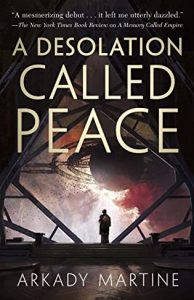 Escape Rating B-: I picked this up because I still miss Teixcalaan. (Yes, I know I said that the ending of
Escape Rating B-: I picked this up because I still miss Teixcalaan. (Yes, I know I said that the ending of 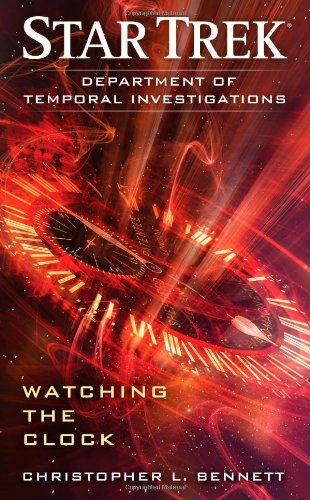 Watching the Clock (Star Trek: Department of Temporal Investigations #1) by
Watching the Clock (Star Trek: Department of Temporal Investigations #1) by  Which sounds a lot like what the Borg were attempting in
Which sounds a lot like what the Borg were attempting in  Big Trouble on Sullivan's Island (Carolina Tales Book 1) by
Big Trouble on Sullivan's Island (Carolina Tales Book 1) by 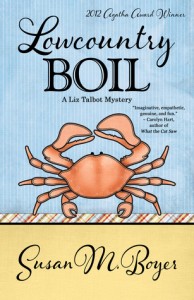 Escape Rating A-: I picked this up because I love the author’s
Escape Rating A-: I picked this up because I love the author’s 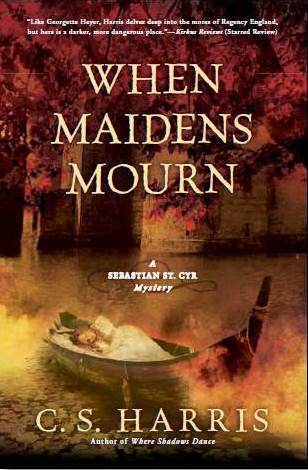 When Maidens Mourn (Sebastian St. Cyr, #7) by
When Maidens Mourn (Sebastian St. Cyr, #7) by 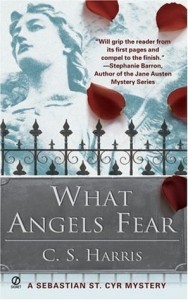 The legend of King Arthur has always loomed large over Britain, but even more so at times when the current monarch is less than popular. Or, as in the case of the corpulent, aging, spendthrift Prinny, Prince Regent for his mentally incapacitated father George III, not just unpopular but downright detested for his endless need for more money and therefore higher taxes to maintain his profligate lifestyle AND continue to prosecute Britain’s seemingly endless war with Napoleon and France.
The legend of King Arthur has always loomed large over Britain, but even more so at times when the current monarch is less than popular. Or, as in the case of the corpulent, aging, spendthrift Prinny, Prince Regent for his mentally incapacitated father George III, not just unpopular but downright detested for his endless need for more money and therefore higher taxes to maintain his profligate lifestyle AND continue to prosecute Britain’s seemingly endless war with Napoleon and France.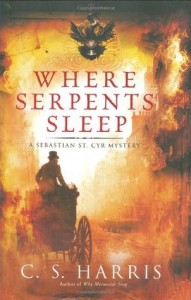 Escape Rating A+: The
Escape Rating A+: The 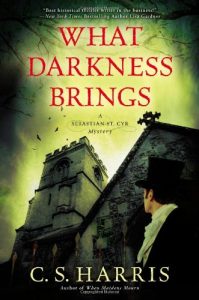 At least, it’s uncertain at this particular point in the series. I began reading St. Cyr almost 20 years ago, at the beginning with
At least, it’s uncertain at this particular point in the series. I began reading St. Cyr almost 20 years ago, at the beginning with 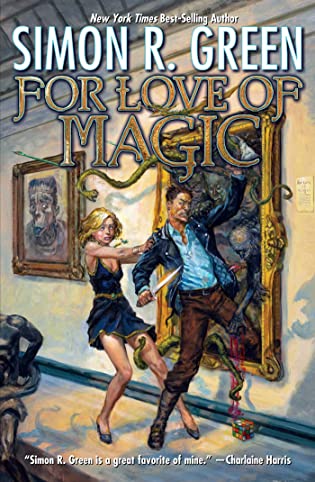 For Love of Magic by
For Love of Magic by 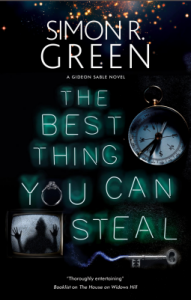 Escape Rating A-: I had a great time with For Love of Magic, but whether you will or not probably depends on how much you like snarky characters with even snarkier commentary – even though this Jack isn’t filled with nearly as much of the snark as some of the author’s previous protagonists.
Escape Rating A-: I had a great time with For Love of Magic, but whether you will or not probably depends on how much you like snarky characters with even snarkier commentary – even though this Jack isn’t filled with nearly as much of the snark as some of the author’s previous protagonists.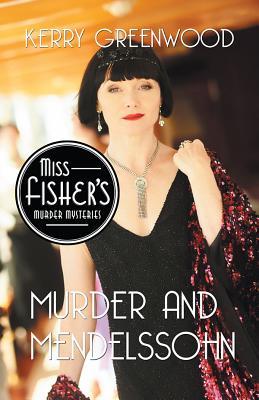 Murder and Mendelssohn (Miss Fisher's Murder Mysteries, 20) by
Murder and Mendelssohn (Miss Fisher's Murder Mysteries, 20) by  For Detective Inspector Jack Robinson, who is most definitely NOT the Jack Robinson of the TV series, it’s a case that he fully admits is not in his area of expertise – so he solicits his friend Phryne Fisher’s help.
For Detective Inspector Jack Robinson, who is most definitely NOT the Jack Robinson of the TV series, it’s a case that he fully admits is not in his area of expertise – so he solicits his friend Phryne Fisher’s help. So a LOT happening, and a ton of fun in the resolution, with more than a bit of derring-do and just a soupçon of bittersweetness. A thoroughly delightful serving of Phryne Fisher’s fascinating brew. And I loved every minute of it!
So a LOT happening, and a ton of fun in the resolution, with more than a bit of derring-do and just a soupçon of bittersweetness. A thoroughly delightful serving of Phryne Fisher’s fascinating brew. And I loved every minute of it!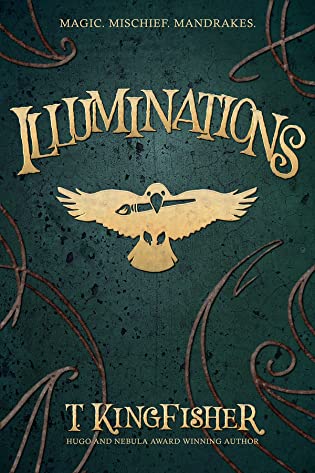 Illuminations by
Illuminations by 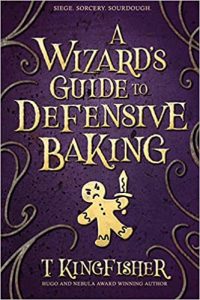 Escape Rating B: I picked up Illuminations because I was hoping for another incredibly awesome book like
Escape Rating B: I picked up Illuminations because I was hoping for another incredibly awesome book like 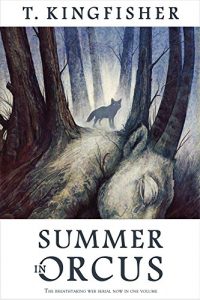 While the recommendations I’ve seen say that if I want more like
While the recommendations I’ve seen say that if I want more like 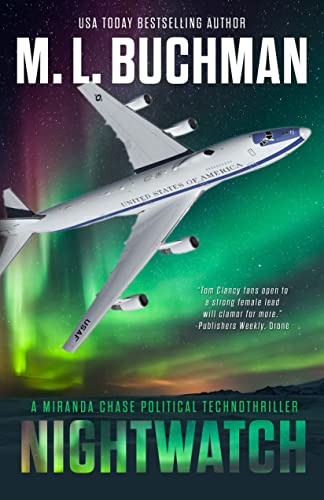 Nightwatch (Miranda Chase NTSB #12) by
Nightwatch (Miranda Chase NTSB #12) by  Escape Rating A+: I’ve been a fan of Miranda Chase from her very first investigation in
Escape Rating A+: I’ve been a fan of Miranda Chase from her very first investigation in  Miranda Chase always delivers. Nightwatch is yet another compulsively readable chapter in her ongoing adventures! I’m already looking forward to her next investigation.
Miranda Chase always delivers. Nightwatch is yet another compulsively readable chapter in her ongoing adventures! I’m already looking forward to her next investigation.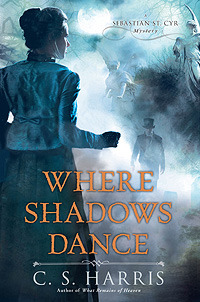 Where Shadows Dance (Sebastian St. Cyr, #6) by
Where Shadows Dance (Sebastian St. Cyr, #6) by 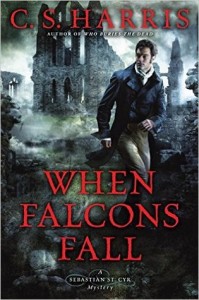 I was hooked back in 2005, and devoured the first five books in the series as they were published. Until, as so many things do, the series got caught up in the black hole of “so many books, so little time” and I stopped following until I was asked to
I was hooked back in 2005, and devoured the first five books in the series as they were published. Until, as so many things do, the series got caught up in the black hole of “so many books, so little time” and I stopped following until I was asked to 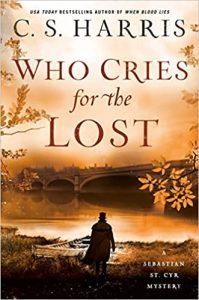 And I love the way the known historical conflicts of the time, both in government in England and in the wider world, are neither ignored nor brushed aside but instead inform every aspect of the mystery and give it depth and substance. All while a murder is committed, the crime is investigated, and evil gets its just desserts even as the story acknowledges that there are plenty of other – and often worse – evils afoot in that wider world that Devlin has yet to deal with. If he can.
And I love the way the known historical conflicts of the time, both in government in England and in the wider world, are neither ignored nor brushed aside but instead inform every aspect of the mystery and give it depth and substance. All while a murder is committed, the crime is investigated, and evil gets its just desserts even as the story acknowledges that there are plenty of other – and often worse – evils afoot in that wider world that Devlin has yet to deal with. If he can.